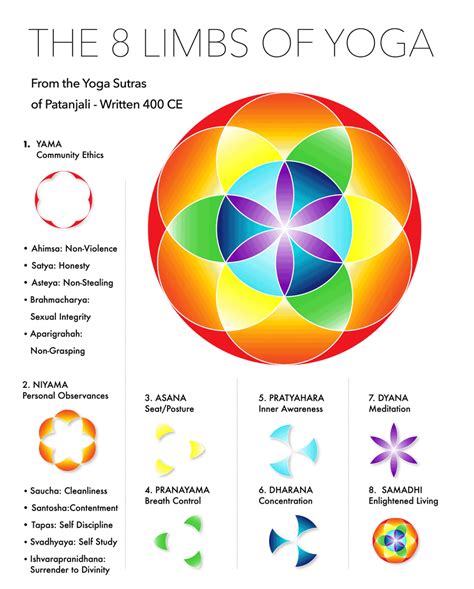The Impact of Meditation on Yoga Practices and Philosophical Perspectives
Meditation, a cornerstone of many spiritual and philosophical traditions, plays a crucial role in the practices of yoga. This article explores how meditation interweaves with yoga and philosophy, offering a comprehensive examination of its significance, current state, practical applications, and future implications. With insights from various expert perspectives, we aim to provide a thorough analysis that benefits both novices and seasoned practitioners.
Key Concepts
- Meditation: A practice of focused attention aimed at achieving a mentally clear and emotionally calm state.
- Yoga: A discipline that integrates physical postures, breath control, and meditation to enhance well-being.
- Philosophy: The study of fundamental questions regarding existence, knowledge, values, reason, and mind.
- Mindfulness: The psychological process of bringing one’s attention to the present moment.
Historical Context
The roots of meditation in yoga can be traced back to ancient Indian texts, notably the Vedas and Upanishads. These texts introduced meditation as a means to attain self-realization and liberation (moksha). Over centuries, meditation evolved through various schools of thought, influencing yoga styles such as Hatha, Raja, and Bhakti yoga.
The philosophical underpinnings of meditation are evident in Buddhist traditions, where mindfulness and concentration practices aim to cultivate insight into the nature of reality. This historical evolution set the stage for the modern integration of meditation into various yoga practices worldwide.
Current State Analysis
Today, meditation is widely recognized for its mental, emotional, and physical health benefits. Numerous scientific studies demonstrate its efficacy in reducing stress, anxiety, and depression while enhancing focus, emotional regulation, and overall well-being. Yoga studios, wellness centers, and therapeutic practices increasingly incorporate meditation, reflecting its growing acceptance in mainstream culture.
Table: Benefits of Meditation in Yoga
| Benefit | Description | Example |
|---|---|---|
| Stress Reduction | Helps lower cortisol levels and promotes relaxation. | Regular practice can alleviate symptoms of anxiety disorders. |
| Enhanced Focus | Improves concentration and cognitive function. | Mindfulness meditation techniques boost attention span. |
| Emotional Regulation | Promotes awareness and acceptance of emotions. | Practitioners report reduced reactivity to stressors. |
| Improved Physical Health | Supports cardiovascular health and immune function. | Studies link regular meditation with lower blood pressure. |
Practical Applications
Meditation can be seamlessly integrated into various yoga practices, enhancing their effectiveness and depth. Below are several practical applications:
- Pre-Class Centering: Beginning yoga sessions with a short meditation to ground participants.
- Mindful Transitions: Encouraging mindfulness between poses to deepen awareness and connection.
- Post-Class Reflection: Concluding sessions with a meditative practice to reinforce lessons learned.
Case Studies
Numerous organizations have successfully integrated meditation into their wellness programs:
- Corporate Wellness Programs: Companies like Google and Apple implement mindfulness meditation to enhance employee well-being and productivity.
- Healthcare Settings: Hospitals use meditation to aid in patient recovery and pain management.
Stakeholder Analysis
The stakeholders in the intersection of meditation, yoga, and philosophy include:
- Yoga Instructors: Play a crucial role in integrating meditation into yoga classes.
- Healthcare Professionals: Benefit from understanding meditation’s health impacts for patient care.
- Philosophers and Scholars: Contribute insights on the theoretical underpinnings of meditation practices.
Implementation Guidelines
For effective integration of meditation into yoga practices, consider the following guidelines:
- Start with short meditation sessions, gradually increasing duration.
- Encourage students to explore various meditation techniques.
- Foster a non-judgmental environment that supports individual experiences.
Ethical Considerations
When promoting meditation in yoga, ethical considerations must be addressed:
- Cultural Sensitivity: Acknowledge the origins of meditation practices and avoid cultural appropriation.
- Informed Consent: Ensure participants understand the purpose and potential effects of meditation.
Limitations and Future Research
While meditation offers numerous benefits, its effectiveness may vary based on individual differences. Further research is needed to explore:
- The long-term impacts of meditation on diverse populations.
- The integration of meditation in various therapeutic settings.
Expert Commentary
As we continue to explore the multifaceted role of meditation within yoga and philosophy, it becomes evident that this practice is not just a tool for relaxation but a profound pathway toward self-awareness and understanding. The integration of meditation into yoga practices enriches both disciplines, creating a holistic approach to well-being.
As we move forward, it is essential to embrace innovative practices and maintain a dialogue about the ethical implications of these ancient traditions in modern contexts. The collaborative efforts of practitioners, scholars, and healthcare professionals will continue to illuminate the transformative power of meditation.








